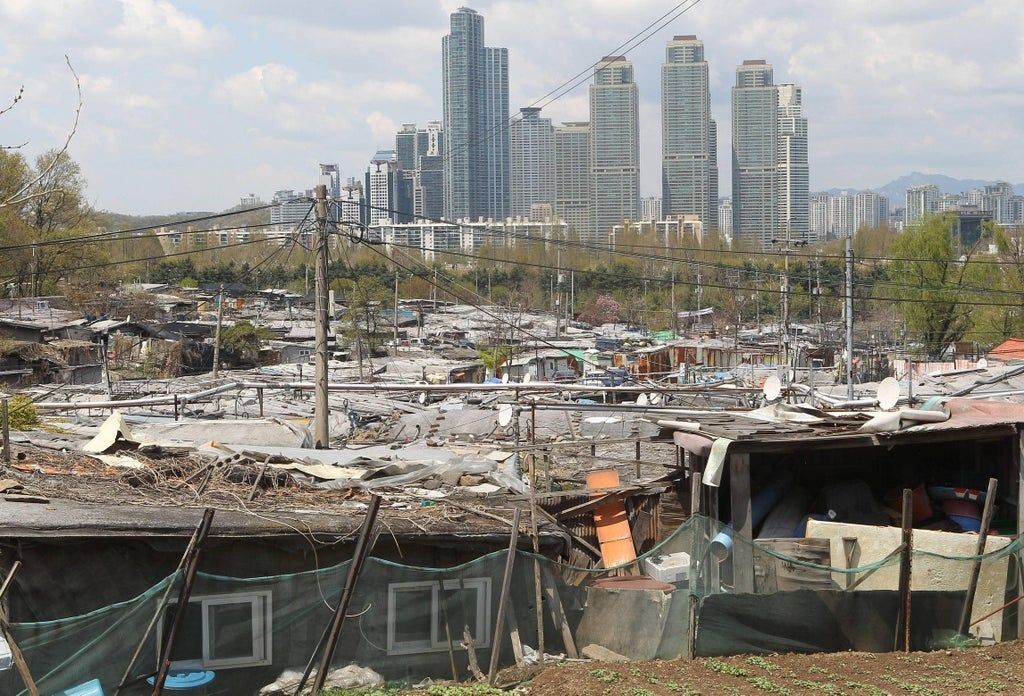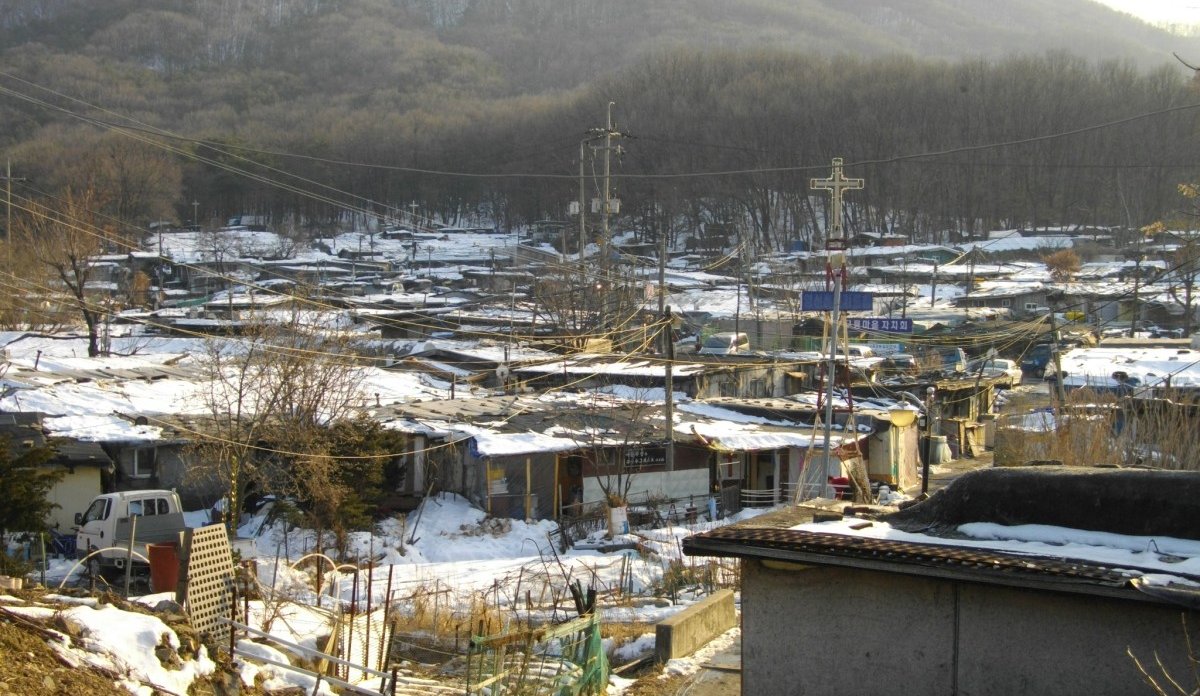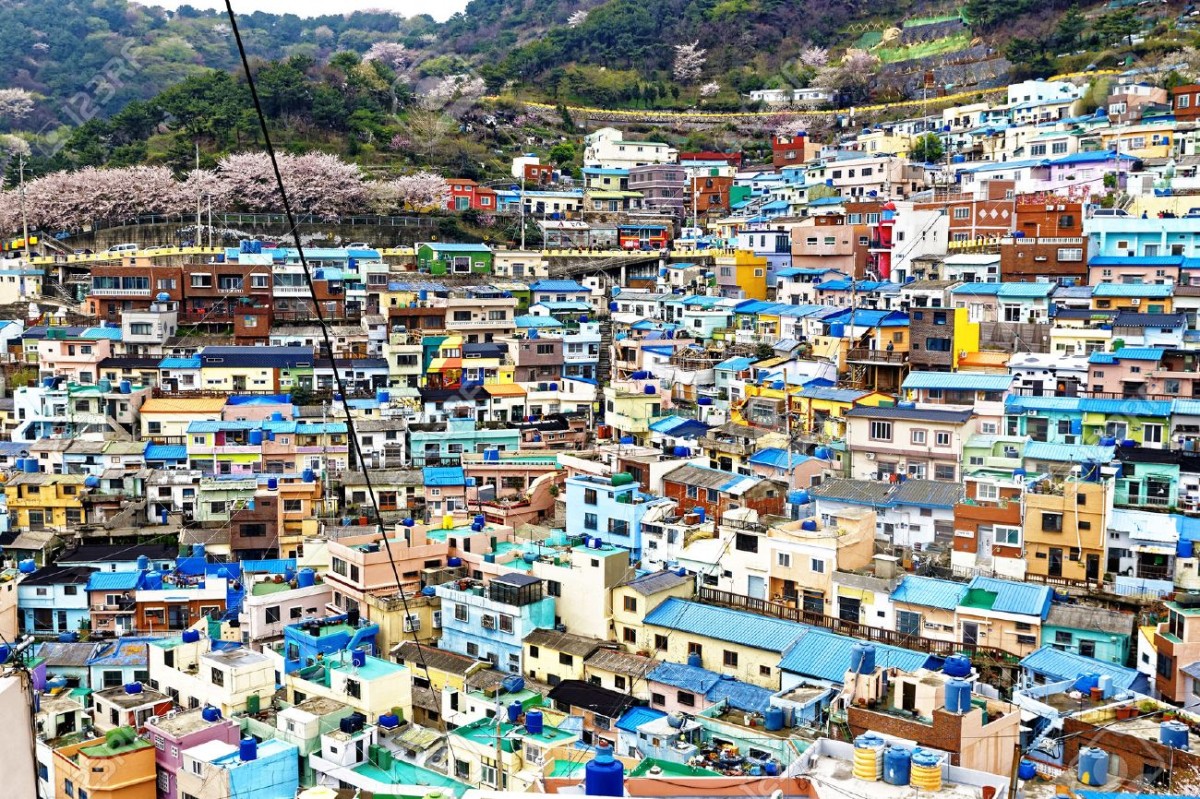Many do not believe that there can be slums in South Korea, this usually happens because what you see most in dramas, movies or reports are chic, elegant people who frequent the most expensive places. Many people only know the positive side of South Korea, such as the fact that Korea is one of the most developed countries in the world.
After the Korean War, South Korea experienced extreme needs. During the 1950s to the early 1960s, Korea was one of the most impoverished countries. Despite all this situation, Korea has become well developed, undoubtedly one of the most developed countries, with its wealth and democracy.
Yes, there are favelas in South Korea and poverty is a reality. Below you can see a bit of the history of two favelas in South Korea, Guryong Village and Gamcheon Culture Village. We also recommend reading our article about Slum in Japan.
Table of Content
Guryong Village Favela
Known as the last remaining slum in Gangnam, the richest district in Seoul, Guryong Village is an illegal territory. In 1988, many people were forced to abandon their homes during preparations for the オリンピック.
More than 2,500 people live there, in unfavorable situations, in makeshift shelters, crumbling huts piled on top of others. The houses are built with plywood, metal and cardboard.
The irony of it all is that right next to this type of housing, you can see the most expensive properties in Seoul, one of the richest and finest neighborhoods in Korea. While the rich neighbors live an extravagant life in wealth, those in Guryong live without even having the basic things for their survival, having to even share a トイレ dug into the ground. People live precariously with open sewage. While Gangnam rises higher and higher, the reconstruction plan for the neighboring slum has been stagnant for years.

Residents of Guryong Village also have to deal with one more concern, the serious fire hazard that is common due to poor electricity quality and also dependence on solid fuels. And since the houses are so close together, the risk is much higher.
What to say about the elderly who live there? Well, most of the elderly residing in the village live without any form of state assistance. In Guryong, it is common to see elderly people collecting paper and cardboard for recycling, and rummaging through trash, and they live only off that. This is quite shocking considering that some of these elderly had a comfortable life during their careers, but unfortunately ended up in a decayed situation. It is believed that this happens because the South Korean government is slow; evidence of this is that only a third of retirees have pensions with relatively insignificant payments, according to some analysts.
Residents try to rebuild the village and resettle residents, but the government is not very helpful and is even against it, leaving them behind. Despite this, the residents continue with their daily battles and do not give up on building a community that serves everyone, there everyone helps each other to pay for public services, such as electricity and water.

Favela Gamcheon Culture Village
Gamcheon located in Busan is a community with a cluster of houses on a mountain. The government ceded that area to people to live in after the war, as many were left in poverty and had nowhere to live.
Over time this place was revitalized, artists gathered to paint the houses and spread their works of art through the streets making the place touristy. Gamcheon draws the attention of tourists with its colorful houses, its labyrinthine alleys and its streets with lots of paintings and sculptures, in other words, the city has become rich in street art.
One of the well-visited spots is the statue of the little prince admiring the city next to his friend the fox, there people line up to take pictures with the statue. Those who visit the village also receive a map and get stamps after visiting some specific places, there are plenty of shops there, the streets are paved and it has a good commercial structure.

It is worth noting that many elderly people spent their youth when Korea was very poor and there was no social system, so at that time they could work hard but had no way to save, and now with advanced age they can no longer work and do not receive much benefits from the social assistance systems. Even if they worked hard, they would earn about 200 dollars a month, and the rent in South Korea is around 300 dollars a month, not to mention the gastos com alimentação.
More than 40% of South Koreans aged 65 and over live in poverty. Another detail is also that poverty also affects a little of the younger generation, most students in Korea start earning money when they graduate from university, about 80% of students go to university, and in the case of Korean boys they still they have to spend two years in the army and usually spend another year getting ready for work, so it shows that they start making money very late, around their 28 or 30's.
We observe a little of the reality of Korea and its two favelas, both came to exist in a difficult moment in the history of South Korea.
